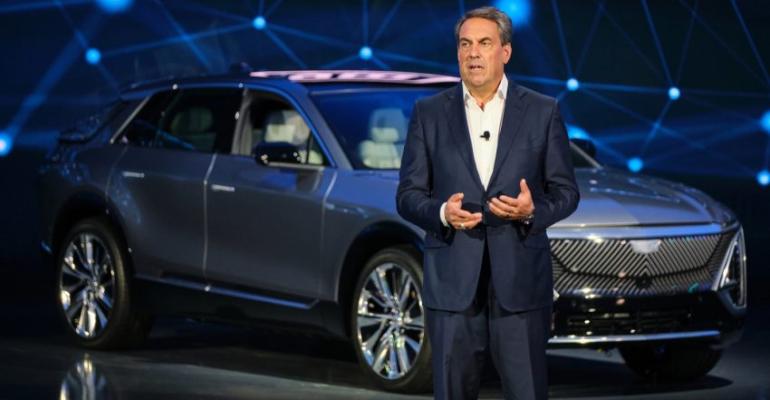LAS VEGAS – General Motors President Mark Reuss, praising auto dealers as “the best entrepreneurs I’ve ever met in any business,” says he’s confident they’ll successfully pivot to a heralded battery-electric-vehicle world.
He also pledges GM wants to make that transition profitable for its retailers.
“We’re going to give dealers the opportunity to make money on EVs,” Reuss says at the J.D. Power Automotive Summit held here in conjunction with the NADA Show last week.
The auto industry overly anticipated the growth of EV sales in the U.S., leading to dealership overstocking and sales incentives.
Still, annual sales of EVs more than quadrupled since 2020, with a first-time 1 million sold last year.
Reuss calls that “a healthy leap.”
He also seeks to allay concerns that EVs will hurt dealership service department profits because those vehicles are less complicated than ones powered by internal-combustion engines, and consequently require fewer repairs and less maintenance.
“I’m not sure brakes, tires and alignments last forever,” Reuss quips. “These are not forever vehicles. They are not problem-free. We will rely extensively on dealers to service those vehicles – and make money on it.”
GM relies on the ‘‘hard work” of dealers to not only sell its vehicles but also to fix and maintain them when needed, he says.
EV manufacturers including Tesla and Rivian have bypassed the traditional franchised dealership system. They instead sell directly to consumers.
But the direct-sales model shows a weakness when it comes to fixing vehicles, Reuss says. “If you get a fender-bender or a flat tire, that’s a big deal.”
Tesla says it is working to expand its service center network.
Some industry insiders herald plug-in hybrid-electric vehicles – which switch to gasoline power when their relatively limited electric range runs out – as a viable transition to all-electric vehicles.
Reuss isn’t so sure about that.
“PHEVs are still two powertrains on one car,” he says. They are expensive. And they are expensive to make.”
GM sells PHEVs in markets outside the U.S.
Declining to name a brand, he adds that the Detroit-based automaker will offer PHEVs in the U.S. at some point. “We know how to do it. And regulators treat PHEVs the same as EVs.”
Government emission mandates are largely spurring the auto industry’s EV momentum.
NADA is urging the federal government to ease up on what the trade group considers unrealistic carbon emission-reduction goals it has set for the auto industry.





